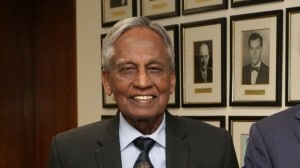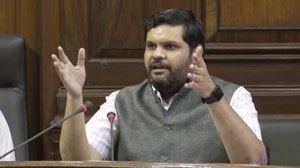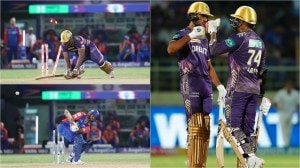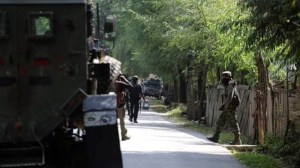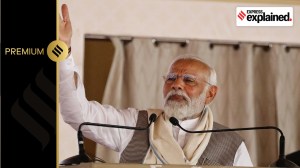- India
- International
Utkala Dibasa or Odisha Day: Story of the state’s formation
The state of Odisha (formerly Orissa) came into existence on April 1, 1936 with the bifurcation of the erstwhile Bihar and Orissa Province, and inclusion of a couple of districts from the Madras Presidency. Here is the story.
 A sand sculpture by Sudarshan Pattnaik on the occaision of Utkala Dibasa. (X/@sudarsansand)
A sand sculpture by Sudarshan Pattnaik on the occaision of Utkala Dibasa. (X/@sudarsansand)April 1 is celebrated as Odisha Day, or Utkala Dibasa, in the state of Odisha. On this day in 1936, a separate Odisha state (then Orissa) was carved out from the erstwhile Bihar and Orissa Province, and the addition of Koraput and Ganjam districts of the Madras Presidency.
According to V S Srinivasan’s The Origin Story of India’s States (2021), this makes Odisha one of only two Indian states to have a formation date predating Independence (the other being Bihar). This also makes Odisha the first state in the country to be consciously created on linguistic basis. Here is a brief history.
Till the creation of Bihar and Orissa Province
What is known today as Odisha, developed a unique political identity some 3,000 years ago. Subsequently, the region was known by different names, ruled by a number of local dynasties, as a unique and vibrant culture developed.
In 1568, however, Odisha lost its political independence and identity, after being conquered by the armies of the Bengal Sultanate. It was later ruled by the Marathas, and finally came under British control in 1803. For the next 109 years, it remained a part of the Bengal Presidency, although a movement for carving up an Odia-speaking state emerged by the late 19th century.
The last decade of the 19th and the first decade of the 20th century saw a vibrant movement for the creation of Bihar, from the erstwhile Bengal Presidency. A number of grievances of the presidency’s Hindi-speaking populations led to this movement, from the monopolisation of white collar jobs by the Bengali middle-class to their sense and expressions of cultural superiority.

The Bihar and Orissa Province, comprising Bengal Presidency’s non-Bengali speaking regions, was finally carved out on March 22, 1912.
A movement for an Odia-speaking state
But in Bihar and Orissa Province’s Odia-speaking districts, the new province changed little on the ground. Thus, the ongoing movement for an exclusively Odia-speaking state only gathered steam after the development.
In its earliest form, in the second half of the 19th century, the movement was one of many in India that focussed on cultural revival, and harkened back to an ancient Odia past. The Utkal Sabha — Utkal being the name the region is referred to in the Mahabharata — was formed in 1882, and marked the beginning of a political movement for the creation of Odisha.
In 1903, the still-active Utkal Sammilani was formed under the leadership of Madhusudan Das, considered by many as the single-most important figure in the creation of Odisha. Madhu ‘Babu’ would go on to be a part of the legislature of the united Bihar and Orissa province, where he continued spearheading the statehood movement.
Things would change particularly after 1920, with the Indian National Congress adopting the reorganisation of provinces on linguistic basis as a key party of its agenda. The Orissa Province was finally created in 1936 after elaborate enquiry by three separate committees — amidst growing subnationalism in the province, it was considered administratively and politically prudent to form a separate state.
The Orissa Province was carved out from the existing Bihar and Orissa Province (42 per cent of land area and 66 per cent of population), Madras Province (53 per cent of land area and 31.7 per cent of population), and Central Provinces (5 per cent of land area and 2.3 per cent of population).
However, 26 princely states, a part of the Eastern States Agency, continued to exist with Orissa Province’s borders until Independence.
More Explained
EXPRESS OPINION
Apr 04: Latest News
- 01
- 02
- 03
- 04
- 05










